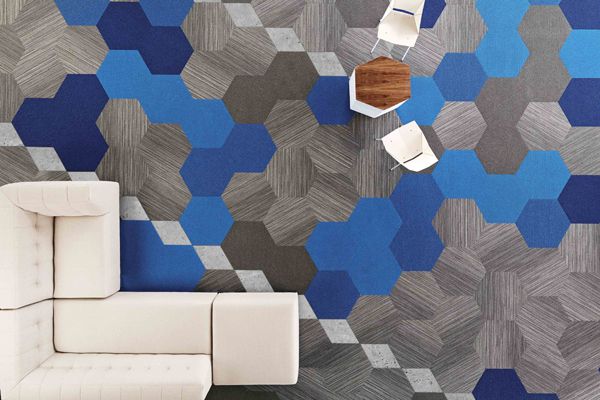With sustainability becoming a powerful incentive for consumers, it is at risk of being hijacked for commercial gain. Good Environmental Choice Australia exposes the marketing speak, and offers advice on how to ensure a product is truly sustainable.

September 8th, 2015
We’ve all seen products claiming to be ‘all natural’ lining supermarket shelves. But we’re not fooled. We’re getting better at recognising ‘greenwash’, where manufacturers make claims about a product’s environmental and/or health attributes with dubious authenticity.
But what about architectural and interior design products? Cutting through the greenwash in these industries can be a bit trickier to navigate.
Natural tile and stone, for example, are perceived as being fairly eco-friendly thanks to their origins. But environmentally, they can cause a lot of damage, requiring vast amounts of energy to source the raw materials, with all the various impacts of mining and quarrying to consider as well.
It’s a similar story for products made from wood. It’s important to make sure timber hasn’t been sourced from environmentally-damaging practices; FSC or PEFC certification is one method of ensuring this.
Take care also when choosing carpet made from wool fibres. Although natural wool fibre has many benefits over synthetic alternatives, including natural stain-resistant properties and biodegradability, it may be treated with solvents and detergents during processing to remove greasy material, which can contribute to pollution of waterways if not properly treated. In addition, it may be treated with fungicides and insecticides that are often synthetic chemicals harmful to human health.

Of course, there are plenty of products on the market that are made from these materials and are perfectly fine, addressing all the issues stated above. The challenge is finding out which products make the cut, and which products are hiding behind clever, and deceptive, marketing.
The easiest way to know for sure whether a product’s green claims are genuine is to look for evidence of third-party certification. The scheme run by Good Environmental Choice Australia (GECA), for example, demonstrates that any environmental or health claims made about a product are true. It also means the product has gone through a robust auditing process to make sure it meets all the environmental, health and social impact criteria of the relevant GECA standard.
In addition to providing credibility to claims, ecolabels also communicate to the purchaser that the certified products meet superior environmental, health and social performance standards when compared to others in the same product category in the market. This means they are a step above Environmental Product Declarations (EPDs) that many are becoming aware of in the industry. EPDs simply report on the environmental performance of a product (which could be anything ranging from bad to excellent) and leave the complex process of comparisons and decision making to purchasers. EPDs are also limited to environmental aspects and do not cover social or ethical concerns.
Employing sustainable products is socially and environmentally responsible, and can provide long-term cost and health benefits. But as with every important decision, it is worth making sure that the time and money invested pay off, and certification models such as GECA provide reliable assurance that your chosen product isn’t just green on the outside.
GECA
geca.org.au
INDESIGN is on instagram
Follow @indesignlive
A searchable and comprehensive guide for specifying leading products and their suppliers
Keep up to date with the latest and greatest from our industry BFF's!

Welcomed to the Australian design scene in 2024, Kokuyo is set to redefine collaboration, bringing its unique blend of colour and function to individuals and corporations, designed to be used Any Way!

Introducing Dimensional Connections, a collection of wall panels and textiles that promote connectivity and comfort from interior finishes brand, Woven Image.
The ’Oscars of the Design World’ name the Plumen 001 light bulb the design of the year, writes Lucy Bullivant.

Flooring is one of the first things you see when you step into the new Corrs Chambers Westgarth premises across Australia. RC+D worked with Bates Smart to deliver custom-designed carpets that fused premium quality luxury with workplace performance.
The internet never sleeps! Here's the stuff you might have missed

In what is already a peaceful idyll on the Mornington Peninsula, Kate Walker has crafted an intimate retreat with new villas for overnight stays at Alba.

Minimalist in form yet robust in performance, the Artisan 934 Panoramic Sliding Door reframes the function of a sliding door as a central architectural element.